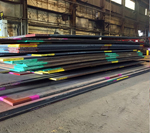
SNYC Steel Fabricators of A36 plate steel Reliable metal fabrication company serving New York City Aluminum, Stainless Steel and carbon steel fabrication professionals for NYC
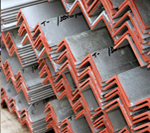
NYC Metal supplier of galvanized steel, Stainless Steel and Aluminum products NYC Metal Fabricators of Aluminum, Stainless Steel and Galvanized steel products Structural steel and metal products delivered to all 5 boroughs of NYC every day!
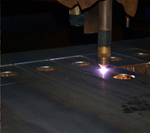
Custom steel Fabricators for residential and commercial construction in NY Dependable steel and metal contractors that deliver in all five NYC bouroughs Professional metal fabricators of Aluminum – Stainless steel – carbon steel in NYC
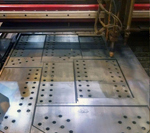
Custom steel Fabricators for NYC Metal Fabricators of Aluminum, Stainless Steel and Carbon steel products for NYC Metal contractors for commercial and residential construction in NY
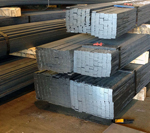
Structural steel, Galvanized steel, Aluminum and Stainless Steel delivered to NYC every day! Metal suppliers serving New York City and all 5 boroughs for commercial and residential construction.
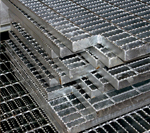
Steel - Aluminum - Stainless Steel – galvanized steel grating and expanded metal products for NYC Custom steel contractors and metal fabrication experts serving NYC Diamond plate from steel – Aluminum - Stainless steel in NYC
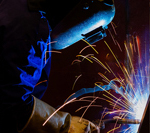
Reliable fabricators of Aluminum, Stainless Steel and carbon steel products for New York Construction. Certified welding and steel fabrication for NYC Expert metal fabricators serving NYC
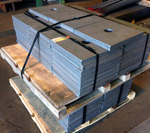
Steel Fabricators – Metal Fabricators – custom fabrication Steel, Aluminum and Stainless Steel fabricated to specification and delivered to all boroughs of NYC Reliable metal fabrication and supply company in NYC
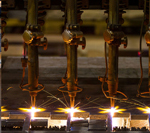
Custom Steel fabricators of sheet metal and plate products in NYC Residential and commercial construction experts for NYC Experienced metal fabricators of carbon steel, Aluminum and Stainless Steel for NYC

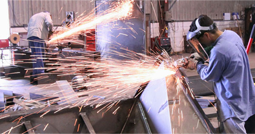

Seth Ravens
GC, NYC
Having heard about Allied Steel NY, we purchased a considerable amount of steel to build a secondary car-parking shed for our company. I had a bad experience with a different steel supplier.
I found Allied Steel NYC and the staff to be very accurate, with an on time delivery of the fabricated steel order. Pricing was highly competitive and I was happy to have received such excellent customer service. We highly recommend Allied Steel of New York City; we now have a new steel supplier local to us in New York City.

Ralph Mannings
Project Manager
We would like to take this opportunity to thank the team of Allied Steel NY for providing the fabricated steel used in constructing our auto workshop. One of the main priorities for this building was the height. The height had to allow for not only the entry of a high van, but also for this van to be raised on a lift in order to access and work on the underneath.
Allied Steel NY provided us everything we needed, all calculations and sizing was absolutely right on the money. All the framing steel was fully galvanized as per our We selected galvanized steel for the minimal amount of maintenance for this building. The overall fabrication work was carried out to a standard befitting a quality Steel Company and its workmanship team is a testament to their overall pride and professionalism.

Sven Jonas
Construction Manager
Allied Steel NYC provided our contractor with quality fabricated steel allowing our project and construction to go quickly and smoothly. Thank your for your honesty and integrity, qualities that are increasingly hard to find in a supply company these days. We would be more than happy to allow any potential clients to visit our project and inspect the quality of the aluminum and steel work. Again thanks to all your team for a great job and we have no hesitation in recommending you to anyone in need of any fabricated metal.

Frank Risignano
Plant Manager
Over the past few years, we have placed a number of orders from the Allied Steel NYC for a number of key projects in Queens NYC, mainly utilizing ASTM A500 & A588 for our cold storage plant located in in Brooklyn, NYC. In order to meet our specific requirements, Allied Steel NYC proved to be the best, especially from cost-effectiveness point of view. The fabricated steel and service provided by Allied Steel was comparatively less in cost as compared other NYC Steel Companies and Fabricators.
It has been of paramount importance to have a great working relationship with a steel company and Allied Steel NYC has become our key steel supplier. Allied Steel NYC continues to prove themselves in an open and honest manner, which benefits this time and time again.

Vincent Reggio
Assistant Plant manager
Our Waste Disposal Plant Long Island City, NYC had been suffering under heavy snow during the last several winters. The old storage shed was a combination of wood and steel and suffered a complete collapse along the rear corner, weakening the rest of the structure.
Having heard great things about Allied Steel NY, decided to seek their assistance in restoring the damaged shed. Our contractor was excited to work with this New York City based steel company, and we went with a modified steel frame engineered to withstand the harshest of conditions including intense snow load.
Our contractor was quite happy as all the material arrived exactly when we needed it, delivered by Allied Steel delivery trucks directly to our Long Island City location, on time, with no issues. Our contractor told us the quality of the steel was excellent and fabricated exactly as were required to achieve both the look and requirement.
I would recommend Allied Steel NYC Steel Fabrication Company to any company who is looking for qualitative, long-lasting and affordable steel products.

John Simmons
VP
It’s truly amazing to witness the evolution Allied Steel New York has gone through over the years and it has been a pleasure of dealing with them.
The business has grown thanks in no small part to their excellent service, as well as an already impressive, yet continually expanding, product range. They have become a key supplier for our projects of steel tube columns, custom pipe supports and steel frames and much more.
Allied Steel’s business strategy and customer service is strategically aligned with ours, they have really helped our company to be more productive; and proactive communication with our Procurement and Site Team has been outstanding, we are happy to have an excellent supply chain partner!

Miles Grebnor
General Contractor
In December 2014, last year, we were commissioned to restore a 5 story commercial building in Queens, NYC. Allied Steel NYC fabricated all the required steel in less than 30 days, delivering the entire order directly to our site. We were extremely happy with the quality of the steel and the pricing was right in line with what we had budgeted.
The customer is “delighted” with the result of the restoration and upgrades and is already moved back into the building.

Steve Fusco
Product Manager
We have been ordering our custom fabricated steel from Allied Steel New York City for years and they continue to be our preferred supplier of Fabricated steel products for most all of our projects.
Allied Steel NYC staff has tirelessly developed a trusted and time served relationship with our Engineering Based Company since we launched our business when we began purchasing small amounts of steel product for projects on Staten Island New York City.
The general engineering industry is a tough business and we are often lumping our suppliers with unreasonable demands for service, price and delivery. Allied Steel NYC always strives to meet these demands and we are continually surprised and impressed with the flexibility and customer service.

Russel
Project Manager
Manhattan NYC
If you require general sheet metal work, medium plate, or steel fabrication in Manhattan, NYC, look no further than Allied Steel New York City. As a metal fabrication company specializing in a variety of steel-related products, we work closely with them to meet all our requirements. We service a variety of industries, as well as government agencies and can depend on Allied getting the order right and delivered fast.
As a steel fabricator, Allied Steel has provided us with custom structural steel fabrication and metal. Allied Steel has a solution to meet your specific requirements.

Donald Peterson
Project Foreman
NYC
We contracted with Allied Steel NYC as key supplier in order to complete our 4 large construction projects in Brooklyn. This installation required custom metal bending with sizes ranging from quarter inch up to three quarter inch thick, in addition to sheet metal fabrication of stainless steel and aluminum products. The custom fabricated plates and formed stainless steel and Aluminum pieces were fabricated promptly and correctly. Allied Steel NY made the job much easier with their reliable service and quality products, better than any other steel fabricators we used in the past and also made deliveries outside of normal business hours. The quality work is reliable, long-lasting and the special deliveries provided greater flexibility for our project.
My experience with Allied Steel New York City as the supplier of this steel products is highly recommended in terms of cost and quality.

Steven Meyer
VP
Dealing with custom Fabricated Steel orders form Allied Steel NYC has been nothing but a pleasure. From on time delivery directly to our site, care and precise specs they have been very reliable with quality of the fabricated steel products never compromised. We awarded Allied Steel NY the contract to supply structural steel for the strip mall project in the Bronx, NYC, worth over a half million dollars. Allied Steel NY provided a quality team that we were in constant contact with. Their quality workmanship helped us to keep the project on track of its tight schedule set by the owner. They have consistently met our guidelines and proved their dedication to their customers for a complex project, combined with the busy site, and a fast tracked schedule.

Matthew Perla
General Manager
SVP
We chose Allied Steel as our key supplier for our upcoming project after touring the metal/steel manufacturing facility. I am pleased to say everything I was told was true. Our order was delivered exactly as described, within the delivery window they gave us. We have since switched to Allied Steel NYC for all our projects, big or small. Allied has always delivered each and every time and I would highly recommend them for any steel based project in any of the five NYC boroughs.
In order to better assist our New York City (NYC) clients and customers and resolve their queries regarding the different types of steel products that we offer, we have created a dedicated FAQ guide. The following are some of the frequently asked questions that many of our NYC clients ask us. Please take a look:
A flitch plate is also commonly known as a flitch beam. It is essentially a carbon steel plate with numerous holes that are placed in a sequential manner. The steel flitch plate is then placed between a couple of wood beam (sandwiched together). Once it is sandwiched together, bolts are placed in order to tightly create a stronger beam. In certain situations, two flitch plates are brought together in order to sandwich a wooden beam. During renovation projects, these flitch plates are used in the basement. When a lally column is removed in order to create additional space, a reinforced flitch plate can be used to increase the structural load strength. After the removal of the lally column, a reinforced flitch plate is needed in order to bear a higher structural load. By installing a flitch plate/beam, the strength of the existing beam can be significantly enhanced. However, in order to determine the exact type of flitch plate/beam that is needed, a NYC architectural engineer must be hired.
A Splice Plate is a standard steel plate that is used to create a connection between two plates of steel. The point where the two steel pieces must be joined together is commonly referred to as the splice point. The connection must be secured properly since it is vital to maintaining the integrity of the structure that connects the two existing steel pieces. This splicing technique is commonly used in numerous situations. For instance, it is used in creating a beam of a longer span length, where standard beams might not be long enough. Once the steel pieces are ready to be joined to each other, the splice plate is placed over the splice point, and tightly bolted in place to create a stronger joint. In most scenarios, the outer edge of the splice plate is also welded together in order to increase the strength of the connection.
A Lintel is generally referred to as a header beam. It is mainly used in structures to create horizontal openings and to support the weight of the structure above the opening. They are structurally placed over windows, fireplaces and doors. They are also used to create a span between two different columns or piers. A common example of lintels being used to create a span between columns is during the construction of a portal. Lintels provide support to the load bearing structure and are commonly employed in the construction of houses, buildings and many other structures. Lintels are generally fabricated from wood, steel or concrete. Not only are lintels useful in adding support to the structure of a building, but they also enhance the outward appearance of the structure itself.
Waler Beams are used in construction projects and serve as supporting brackets for steel sheet pile walls, or for supporting concrete walls. Waler beams (also spelled as whaler) were originally created in order to provide support for retaining wall systems with the help of sheet piles or reinforced concrete beams. They can also be used to transfer structural weights across the wall via tie rod connections. The beams must be placed horizontally over the area that needs to be structurally reinforced. Once they have been properly placed, steel washer plates must be placed at either end of the rod in order to securely lock down the rod and tighten the waler in its place.
In order to prevent the steel from moving or bucking in its place, waler beam can be used to provide a temporary reinforcement brace. This is helpful when the concrete has been newly poured on a steel form. Until the concrete sets in place, the waler beam can be used to keep the steel form in its original location. steel channel sections are used for the construction of these walers. They are fabricated one after the other, with only a small space left between them. This allows for the tie rod to pass through the beam. Structural beam sections can also be drilled into the section for similar applications.
A Pour Stop is manufactured from a number of different types of sheet or plate thicknesses, which are bent into various shapes. The pour stop is used popularly in construction applications, mainly to act as a barrier and prevent the concrete from pouring into certain areas. For example, a pour-stop can be used to prevent the concrete from pouring into a floor that is made out of steel, mainly for newly constructed buildings. Flat metals such as carbon steel, stainless steel, galvanized steel or aluminum is used for the manufacture of formed pour stops.
Sheet fabrication process involving a press brake machine is used in order to bend the pour-stop into various shapes such as z- channels, C-channels or any other custom shape that may be needed. Then, the pour-stop is installed by welding around the area where the concrete pour must be stopped. Once it is properly installed, the pour-stop serves as the barrier, preventing the concrete from pouring further.
A Caisson is a watertight structure that is mainly used for working on the foundation of a building or architectural project that is completely submerged in water. The Caisson is generally manufactured from carbon steel and is then filled up with concrete, resulting in the creation of a concrete pile.
Caissons are used in a host of different construction applications. Their most common use is in the construction of bridges, where the caisson serves as the foundation on the riverbed.
As the name suggests, Stair Pans are commonly used in the construction of stairs. They are formed in the shape of a pan and concrete is filled within. Sheet steel or steel plates are used in the creation of these pans. During the sheet fabrication process, a press brake machine is used to turn the sheet steel into a u- shaped pan, with a depth of approximately 1- ½ or 2 inches. These pans are then placed on top of each other and are tightly bolted or welded together in between channel stringers. This ultimately results in the creation of a staircase.
However, the construction process is not complete as yet. After the pans have been sandwiched together, concrete is filled into the pans. This creates open riser stairs that are very popular in outdoor applications. This is mainly because these stairs can be cleaned quite easily. In a number of cases, a rear flange beam is used for forming the pans in order to extend to the next stair pan. This creates a closed riser staircase.
Sheet steel, diamond plate or checker plate can also be used for fabricating a stair tread. Again, these diamond treads are tightly sandwiched together, bolted together in a z- shape to create a stronger connection. The front flange is bent down while the rear flange is bent upwards to create a seamless flow. The treads are tightly welded and bolted between stringer channels.
In typical situations, a wood tread is bolted to the steel treads in order to give more of a rustic outlook. However, if they are made of diamond plate or a checker plate, this gives off a more industrial outlook. There are practical implications of this as well, since the diamond plate increases the amount of friction on the surface, providing a stronger grip. These are generally used in industries and for lining the surfaces of trains. They are also used as wall panels in some situations.

 (212) 709-8123
(212) 709-8123